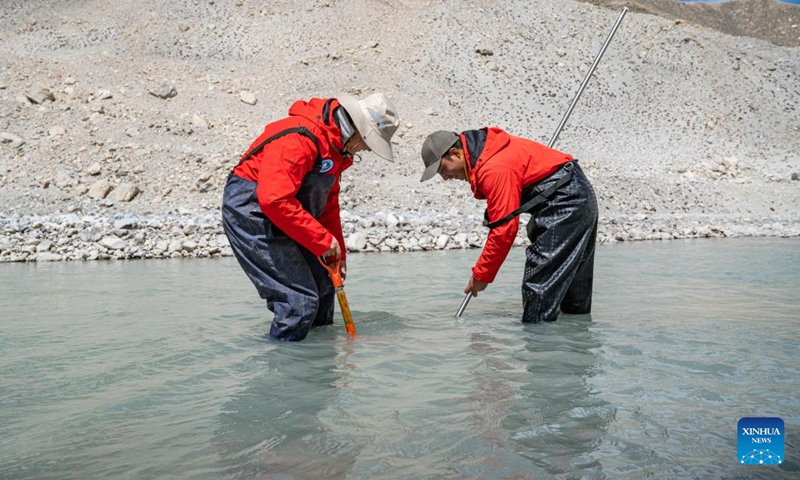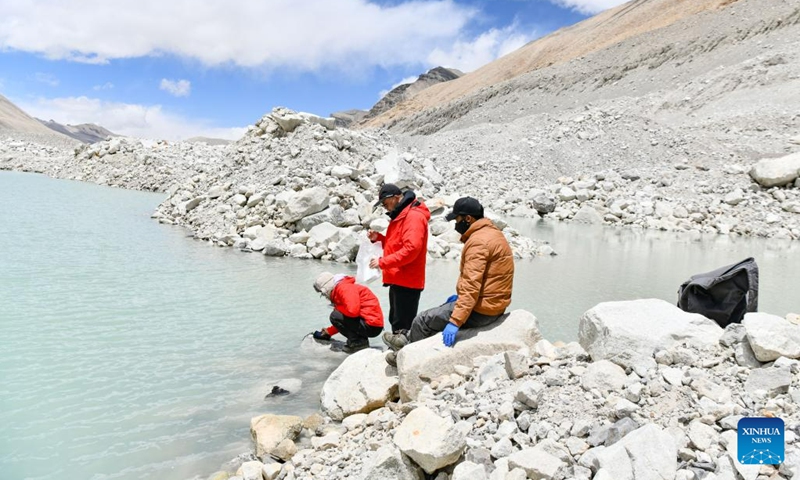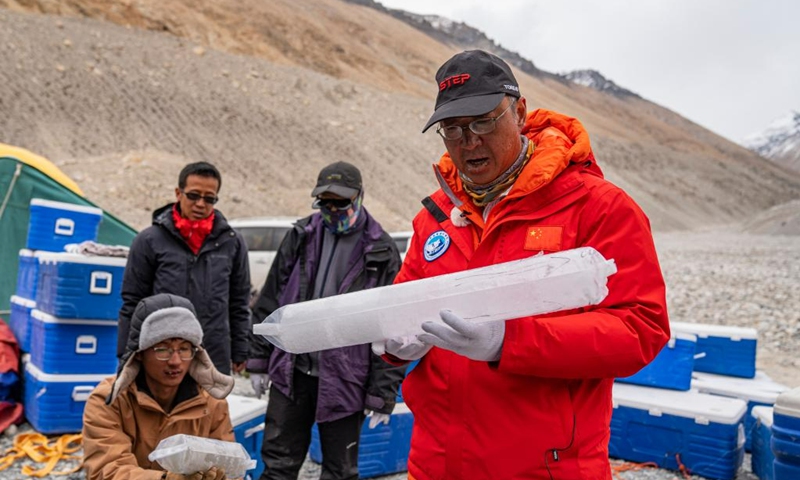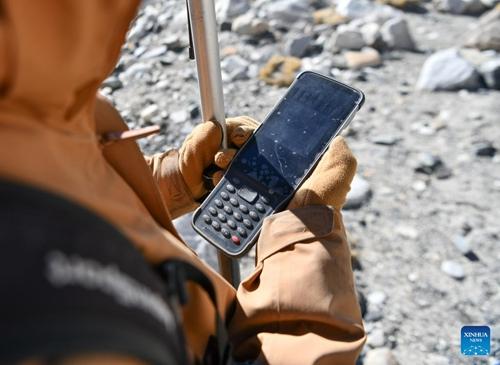
Scientific research members from Tibet University collect aquatic life samples near the mountaineering base camp in the Qomolangma National Nature Reserve in southwest China's Tibet Autonomous Region, May 22, 2023. The 2023 Mt. Qomolangma expedition is part of the second comprehensive scientific expedition on the Qinghai-Tibet Plateau, initiated in 2017.(Photo: Xinhua)

Scientific research members with the Institute of Tibetan Plateau Research under the Chinese Academy of Sciences (CAS) check the water quality of a proglacial lake in the Mount Qomolangma region at an altitude of 5,300 meters, in southwest China's Tibet Autonomous Region, on May 12, 2023. The 2023 Mt. Qomolangma expedition is part of the second comprehensive scientific expedition on the Qinghai-Tibet Plateau, initiated in 2017.(Photo: Xinhua)

Kang Shichang (R), a researcher with the Northwest Institute of Eco-Environment and Resources under the Chinese Academy of Sciences (CAS), checks an ice core, drilled from Mount Qomolangma at an altitude of 6,500 meters, at the mountaineering base camp in the Qomolangma National Nature Reserve in southwest China's Tibet Autonomous Region, May 22, 2023.(Photo: Xinhua)

Xue Yu'ang, a researcher with the Northwest Institute of Eco-Environment and Resources under the Chinese Academy of Sciences (CAS), positions the glaciers in the Mount Qomolangma region at an altitude of 5,300 meters, in southwest China's Tibet Autonomous Region, on May 15, 2023. The 2023 Mt. Qomolangma expedition is part of the second comprehensive scientific expedition on the Qinghai-Tibet Plateau, initiated in 2017.(Photo: Xinhua)
